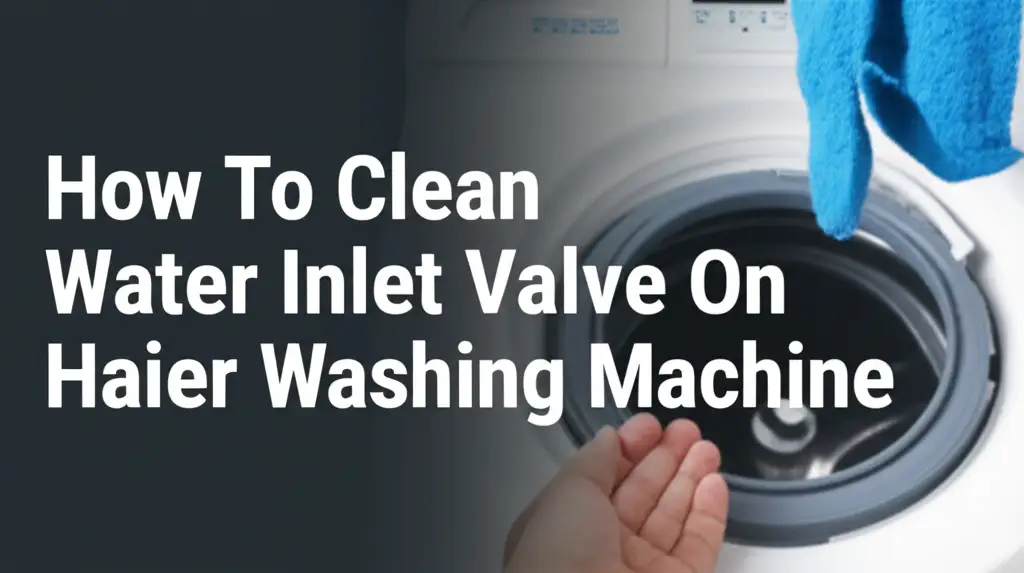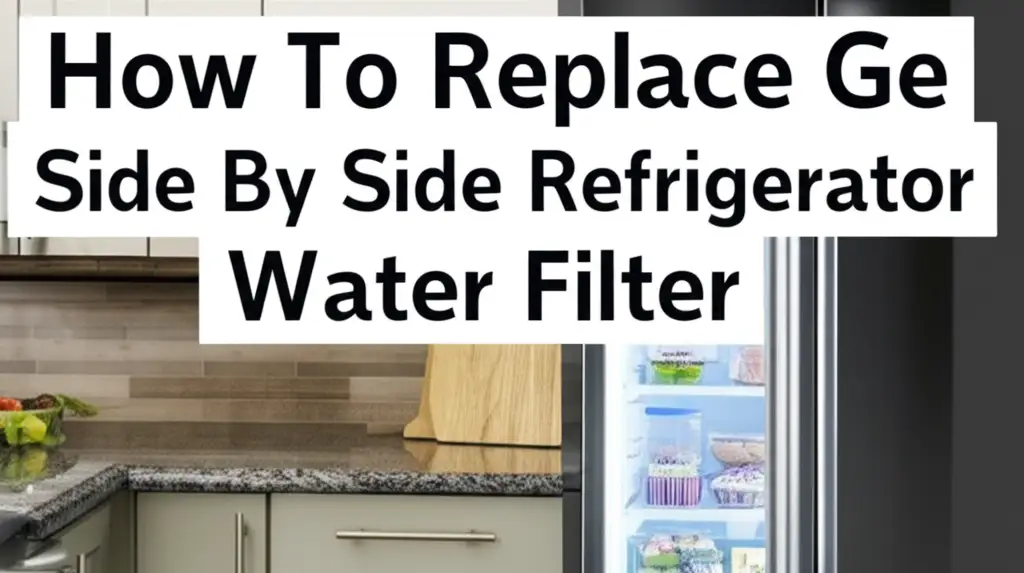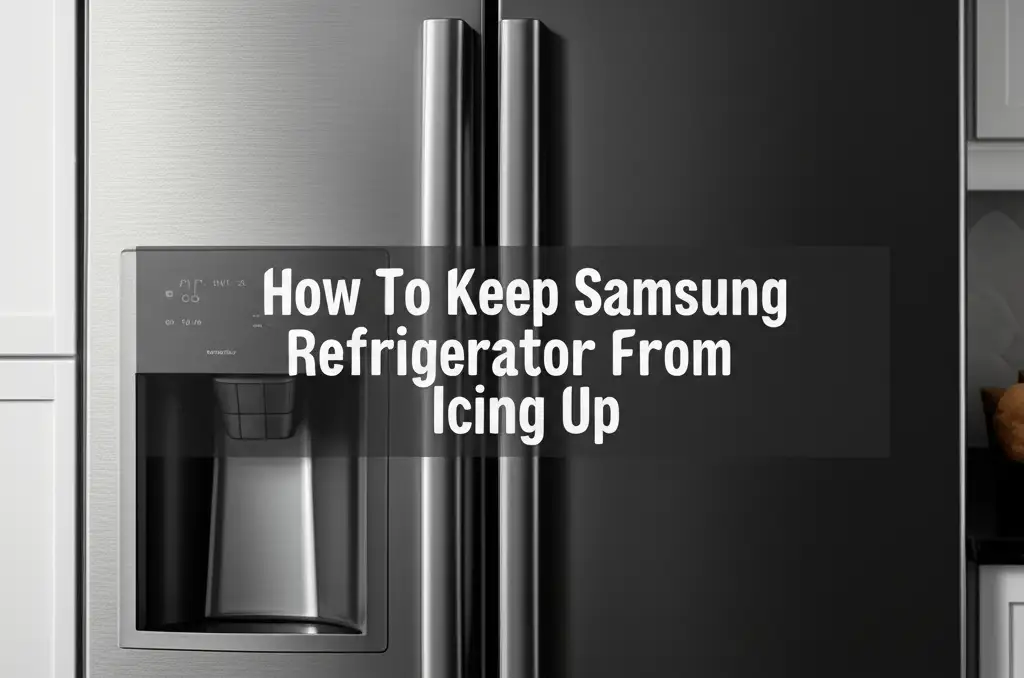· Todd Martin · Appliance Maintenance · 19 min read
How To Clean Water Inlet Valve On Haier Washing Machine

Effectively Clean Your Haier Washing Machine Water Inlet Valve
Your Haier washing machine brings convenience to your home. It handles your laundry needs quickly. But sometimes, machines do not fill with water properly. This can be frustrating. A common reason for this problem is a dirty water inlet valve. This valve controls water entering your washer.
Mineral deposits and debris build up inside it over time. This buildup can restrict water flow or stop it completely. Cleaning this valve can fix many common water supply issues. It helps your machine work as it should. This guide shows you exactly how to clean the water inlet valve on a Haier washing machine. You will learn the steps to restore your machine’s performance. Follow these instructions for a smooth and efficient cleaning process.
Takeaway
- Improve Water Flow: Cleaning the inlet valve filters removes clogs. This helps your Haier washer fill properly.
- Prevent Future Issues: Regular maintenance reduces mineral buildup. This stops problems before they start.
- Extend Machine Life: Keeping the valve clean helps your Haier washing machine last longer. It ensures parts work correctly.
To clean the water inlet valve on a Haier washing machine, first disconnect power and water. Then, locate the valve at the back of the machine. Remove the inlet hoses and pull out the small filter screens. Clean these screens with water and a brush. Reinstall the screens and hoses, then restore power and water to test.
Understanding Your Haier Water Inlet Valve System
The water inlet valve is a vital component in your Haier washing machine. This part acts like a gatekeeper. It opens and closes to let water into the wash tub. Two hoses connect to this valve. One hose brings cold water, and the other brings hot water. Inside the valve, you find small mesh screens. These screens catch debris from your home’s water supply. They protect the internal parts of the washing machine.
Over time, these screens collect dirt, rust, and mineral deposits. Hard water especially contributes to this buildup. When enough debris collects, the screens become clogged. This blockage stops water from flowing freely into your Haier washer. You may notice slow filling or no water at all. Understanding this component helps you fix water supply issues. It is a simple part to check and clean.
Signs of a Clogged Haier Inlet Valve
Your washing machine shows clear signs when its water inlet valve is clogged. The most common sign is slow filling. You might notice the wash cycle takes much longer to start. The machine may also make unusual noises. A buzzing sound with no water flow often points to a valve issue. Sometimes, the machine does not fill at all. This means a complete blockage in the valve filters.
Another indicator is dirty water in the tub. If the screens are partly clogged, they might let some dirty water through. You might also see lower water levels than normal during a wash. Your clothes may not get clean enough. Addressing these signs early prevents bigger problems. If your Haier washing machine is not filling up with water, checking the inlet valve is a good first step. A clogged valve impacts washing machine performance. It reduces cleaning efficiency.
Why Your Haier Valve Gets Dirty
Several factors contribute to dirt and debris buildup in your Haier washing machine’s water inlet valve. Hard water is a major cause. Hard water contains high levels of minerals like calcium and magnesium. These minerals deposit inside pipes and on screens. Over time, these deposits harden. They form a tough layer that blocks water flow. If you live in an area with hard water, regular valve cleaning is important.
Another source of dirt is sediment from your water pipes. Older pipes can shed small rust particles or scale. These particles travel with the water. The inlet valve screens are designed to catch them. If your home’s water supply has many impurities, the screens will clog faster. Even city water can contain small amounts of sand or silt. Well water often has more sediment. Regular maintenance helps manage these issues. Cleaning the water inlet valve on your washing machine keeps it clear.
Safety First: Preparing for the Cleaning Process
Before you start any work on your Haier washing machine, safety is paramount. Working with water and electricity requires caution. My first step is always to disconnect power. Locate the power cord and unplug it from the wall outlet. Do not just turn off the machine. An unplugged machine ensures no accidental power surges. This protects you from electrical shock.
Next, you must turn off the water supply. Find the hot and cold water faucets behind your washing machine. These are usually red and blue handles. Turn both handles clockwise until they are fully closed. This stops water from flowing to the machine. You do not want water spraying everywhere when you disconnect the hoses. Taking these initial safety steps creates a safe work environment. It protects both you and your appliance.
Essential Tools and Supplies
Gathering your tools before you begin saves time. For this job, you do not need many specialized items. I always make sure I have a bucket or a few towels. These catch any residual water from the hoses. A pair of pliers helps loosen stubborn hose connections. You may need them to unscrew the inlet hoses. A small brush, like an old toothbrush, is useful for cleaning the mesh screens. It helps scrub away tough deposits.
Sometimes, a pair of needle-nose pliers is good for pulling out the screens. A flashlight can help you see into tight spaces. You might also want a cleaning solution. White vinegar works well for dissolving mineral buildup. A small bowl for soaking the screens is also handy. Having all your tools ready makes the cleaning process smooth. It helps you do it yourself on your washing machine.
Preparing Your Work Area
A well-prepared workspace makes the job easier and safer. First, make sure you have enough light. A bright area helps you see small parts clearly. You may need to pull your Haier washing machine away from the wall. This gives you room to access the back panel. Be careful when moving the machine. It can be heavy. Ask for help if needed to avoid injury.
Lay down old towels or a tarp on the floor. This protects your flooring from water spills. Even after draining hoses, some water remains. A small bucket can catch this excess water. Ensure the area is clear of clutter. You do not want to trip over anything. A clean, organized space helps you focus on the task. It also makes finding tools simple.
Locating and Accessing the Haier Inlet Valve
The water inlet valve on your Haier washing machine sits at the back. It is typically located near the top where the water hoses connect. You will see two threaded spouts sticking out. These are where the hot and cold water supply lines attach. The valve body itself is usually plastic. It may have electrical wires connected to it. These wires control the valve’s opening and closing.
To get to the valve, you must first move your washing machine. Pull it away from the wall so you can easily reach the back. Some Haier models may require you to remove a rear access panel. Most often, the valve is directly accessible once the machine is pulled out. Knowing its general location saves time. It helps you focus on the next steps for cleaning.
Front-Load vs. Top-Load Haier Models
Locating the water inlet valve is similar for both front-load and top-load Haier washing machines. For top-load models, the valve is usually high on the back panel. It sits right where the water hoses screw in. Access is often direct. You do not need to remove many parts. Simply pulling the machine away from the wall provides enough space.
For front-load Haier models, the valve is also on the back. It is typically mounted to the rear panel. Sometimes, it is slightly lower or positioned differently depending on the specific model. The hose connections remain the primary indicator of its location. Regardless of the machine type, the principle is the same. The valve is always at the point where water enters the machine from your home’s supply. Always confirm you are looking at the correct component.
Disconnecting the Water Hoses
Once you have located the water inlet valve, the next step is to disconnect the water hoses. You will see two hoses attached to the valve. One is for hot water, marked with a red tag or connector. The other is for cold water, marked with blue. Before loosening anything, place a bucket or towels under the connections. Even with the water supply off, some residual water stays in the hoses.
Use pliers or your hand to turn the hose connectors counter-clockwise. They should unscrew fairly easily. Be ready for a small amount of water to spill out. Once loosened, pull the hoses straight off the valve spouts. Inspect the ends of the hoses for any debris. You may find some sediment there. Now, the valve is ready for inspection. This process is similar for any washing machine, like learning how to clean a water inlet valve on a GE washing machine.
Step-by-Step Guide to Cleaning the Haier Inlet Valve Filters
Now comes the actual cleaning part. After disconnecting the hoses, look closely at the valve spouts. You will see small, cylindrical mesh screens inside each spout. These are the inlet filters. They prevent large particles from entering the valve. These screens are where most of the debris collects. They are the primary targets for cleaning.
Your goal is to remove these screens. They usually sit snugly inside the spouts. You might need a pair of needle-nose pliers or tweezers to grab them. Gently pull them straight out. Be careful not to damage them. They are often made of fine mesh plastic. Once removed, you can begin the cleaning process. This step is crucial for restoring water flow.
Cleaning the Inlet Screens
With the screens removed, you can now clean them thoroughly. Hold each screen under running water. Use a small brush, like an old toothbrush, to scrub away any visible dirt or mineral buildup. I scrub both the inside and outside of the mesh. Make sure water flows freely through the screen holes. If the buildup is stubborn, soak the screens.
I often use a solution of equal parts white vinegar and warm water. Place the screens in this solution for about 30 minutes to an hour. Vinegar helps dissolve hard water deposits. After soaking, scrub them again under running water. Ensure all debris is gone. The screens should look clean and free of blockages. This step makes a big difference.
Inspecting the Valve Body
After cleaning the screens, take a moment to inspect the valve body itself. Look into the spouts where the screens sit. Use a flashlight if needed. Check for any large debris or mineral chunks inside the valve. Sometimes, small pieces can break off and lodge deeper. Use a cotton swab or a small brush to gently clean inside the spouts. Do not push anything deep into the valve.
Avoid using harsh chemicals or abrasive tools directly on the valve body. These can damage the internal components. The primary cleaning focus remains on the removable screens. The valve body itself is mostly a sealed unit. If you see signs of wear, cracks, or heavy discoloration that cleaning cannot fix, consider that the water inlet valve on your washing machine may need repair. This inspection helps determine if simple cleaning is enough.
Reassembling and Testing Your Haier Washing Machine
Once the inlet screens are sparkling clean, you are ready to reassemble your Haier washing machine. This process is straightforward. First, carefully insert the cleaned mesh screens back into their respective valve spouts. Push them in firmly until they sit flush. Make sure they are fully seated. They should not wobble or fall out easily.
Next, reconnect the hot and cold water hoses. Remember which hose goes to which spout. Typically, red for hot and blue for cold. Screw the hose connectors onto the valve spouts by hand first. Make sure they thread on smoothly. Then, use pliers to tighten them slightly. Do not overtighten, as this can damage the plastic threads. Just make them snug and secure to prevent leaks. My experience tells me snug is good enough.
Restoring Power and Water Supply
With the hoses securely reattached, you can now restore the water supply. Slowly turn on the hot and cold water faucets behind your Haier washing machine. Turn them counter-clockwise until they are fully open. Listen for any hissing sounds, which might indicate a leak. Check around the hose connections for drips. If you see any, tighten the hoses a little more.
After restoring water, plug the washing machine’s power cord back into the wall outlet. The machine is now ready for a test run. This step is important. It confirms your cleaning efforts were successful. It also checks for any new leaks.
Running a Test Cycle
To test your Haier washing machine, select a short wash cycle. A rinse and spin cycle works well. Start the machine. Listen for the sound of water filling the tub. It should fill at a normal rate. Observe the water flow. It should be strong and steady. Check for leaks around the water inlet valve and hose connections during the entire cycle.
Let the machine complete the cycle. This ensures everything works correctly. If the machine fills properly and there are no leaks, you have successfully cleaned your water inlet valve. Congratulations! If problems persist, you might need to troubleshoot further. But for most slow-fill issues, this cleaning solves it. It helps you keep your Haier washing machine in good condition.
Preventing Future Clogs and Maintaining Your Haier Washer
Cleaning your Haier washing machine’s water inlet valve is a great step. But regular maintenance helps prevent future clogs. I recommend checking and cleaning these filters at least once a year. If you have hard water, or if your water supply contains a lot of sediment, you might need to do it more often. Quarterly checks are good for high-risk homes. This proactive approach saves you from sudden machine failures.
You can also install a water softener if your home has very hard water. A water softener reduces mineral content. This means fewer deposits in your pipes and appliances. It protects your washing machine and other water-using appliances. Consider a whole-house filter. This type of filter removes sediment before it reaches your washing machine. Investing in these systems can extend the life of your appliances significantly. Regular care ensures your Haier washer performs well for years. It is an easy way to keep your home running smoothly.
Regular Maintenance Schedule
Establishing a regular maintenance schedule keeps your Haier washing machine in top shape. Beyond the inlet valve, other parts benefit from routine checks. I usually clean the detergent dispenser once a month. Leftover detergent can clog it. I also run a cleaning cycle using a washing machine cleaner or vinegar every few months. This removes soap scum and odors from the drum. You can learn how to clean a washing machine with vinegar.
Inspect the drain filter every few months as well. This filter catches lint and small items. A clogged drain filter can cause draining issues. Check the hoses for cracks or bulges annually. Replace any worn hoses to prevent leaks. These small steps prevent large problems. They help your Haier washing machine last longer.
Water Quality Considerations
The quality of water entering your home directly impacts your Haier washing machine. Hard water, as mentioned, leads to mineral buildup. If you suspect hard water, you can test it. Simple kits are available at hardware stores. Knowing your water hardness helps you decide on solutions. A water softener is effective for very hard water.
If you have well water, sediment can be a bigger issue. Well water often contains sand, silt, or rust. A sediment filter installed at your main water line can protect all your appliances. This external filter catches particles before they enter your home’s plumbing. It significantly reduces the burden on your washing machine’s inlet valve screens. Good water quality means less frequent cleaning for your Haier washer. It extends the life of various home appliances.
Troubleshooting Common Haier Water Inlet Valve Issues (Beyond Cleaning)
Sometimes, cleaning the water inlet valve filters does not fix the problem. This means the issue might be deeper. The water inlet valve itself could be faulty. Valves contain electrical solenoids that open and close the water flow. These solenoids can fail over time. If a solenoid burns out, the valve will not open, even if the screens are clean.
You might hear a buzzing sound from the valve but no water. Or, one side (hot or cold) might not work. In such cases, cleaning will not help. You will need to replace the entire water inlet valve. This is a more involved repair. It requires disconnecting the electrical wires and mounting screws. A multimeter can test the solenoids for continuity. If there is no continuity, the valve is bad.
Low Water Pressure Concerns
Low water pressure in your home can mimic a clogged water inlet valve. If your Haier washing machine fills slowly, check your home’s overall water pressure. Turn on a faucet in a nearby sink or bathtub. Is the water flow weak there too? If so, the issue is not with your washing machine. It is with your home’s water supply.
Causes of low water pressure include:
- Partially closed main water valve: Check the main shut-off valve for your house. Make sure it is fully open.
- Pipe blockages: Mineral buildup or rust inside your home’s pipes can restrict flow.
- Water utility issues: Sometimes, the problem lies with your municipal water supply.
- Pressure regulator problems: Many homes have a pressure regulator. If it fails, pressure drops.
Addressing your home’s water pressure ensures all appliances receive adequate flow. This is important, as problems like “why is my Whirlpool washing machine not filling with water” can stem from pressure issues, not just clogs.
Valve Malfunction vs. Clog
It is important to distinguish between a clogged valve and a malfunctioning valve. A clogged valve means the screens are blocked. Water flow is restricted or stopped by debris. Cleaning the screens fixes this. A malfunctioning valve means the internal electrical or mechanical parts have failed. The valve cannot open or close properly. This happens even if the screens are perfectly clean.
Here are some clues to help you differentiate:
- Clog: Slow fill, no fill (but a humming sound from the valve), normal water pressure in other parts of the house.
- Malfunction: No fill (no humming or clicking sound), or only hot/cold water fills, buzzing sound but no water (solenoid trying but failing), normal home water pressure.
If you have cleaned the screens and confirmed good water pressure, but your Haier washing machine still does not fill, the valve likely needs replacement. Replacing a water inlet valve is a job you can do yourself with basic tools. However, if you are unsure or uncomfortable with electrical components, contact a qualified appliance technician. They can diagnose and fix the problem safely.
FAQ Section
How often should I clean the Haier inlet valve?
I recommend cleaning your Haier washing machine’s water inlet valve filters at least once a year. If you live in an area with hard water or high sediment, check them every six months. Regular checks prevent major flow issues. This proactive approach saves time and keeps your machine working efficiently.
What happens if I do not clean the valve?
If you do not clean the water inlet valve, debris and minerals will build up. This restricts water flow to your Haier washing machine. Your machine may fill very slowly or not at all. This can lead to longer wash cycles and inefficient cleaning. Eventually, the machine may stop working.
Can a clogged valve cause leaks?
A severely clogged water inlet valve can sometimes lead to leaks. When water flow is blocked, pressure can build up within the valve or hoses. This increased pressure can stress connections. Over time, it may cause a hose to burst or a connection to leak. Always address clogs quickly to prevent this.
What tools do I need for this job?
You will need basic tools for this job. Gather a bucket or towels for water, pliers to loosen hoses, a small brush (like a toothbrush) for cleaning screens, and possibly needle-nose pliers for removing screens. White vinegar can help dissolve stubborn mineral deposits from the filters.
When should I replace the valve instead of cleaning it?
You should replace the water inlet valve if cleaning the screens does not fix the problem. This suggests an internal malfunction. If the valve buzzes but no water flows, or only one temperature works, it likely needs replacement. Look for physical damage like cracks or leaks from the valve body itself.
Does hard water affect the valve?
Yes, hard water greatly affects the water inlet valve. Hard water contains high levels of minerals such as calcium and magnesium. These minerals form deposits that cling to the valve’s mesh screens. Over time, these deposits harden and build up, causing significant blockages that restrict water flow.
Keeping Your Haier Washer Flowing Freely
You have now learned how to clean the water inlet valve on your Haier washing machine. This important maintenance task prevents common water filling issues. By following the steps outlined, you can easily restore full water flow. Remember to prioritize safety by disconnecting power and water first. Take your time when disconnecting hoses and removing the small filter screens. Cleaning these screens with a brush and vinegar solution effectively removes mineral buildup and debris.
Regular maintenance extends the life of your appliance. Cleaning the water inlet valve at least once a year helps your Haier washing machine operate efficiently. This simple DIY fix saves you time and money on service calls. If your machine continues to have problems after cleaning, consider professional help. A properly maintained washing machine ensures clean clothes and fewer headaches for you. Keep your Haier washer filling freely and washing well.
- Haier washing machine
- water inlet valve
- washing machine repair
- DIY appliance repair
- washing machine maintenance
- Haier washer not filling





